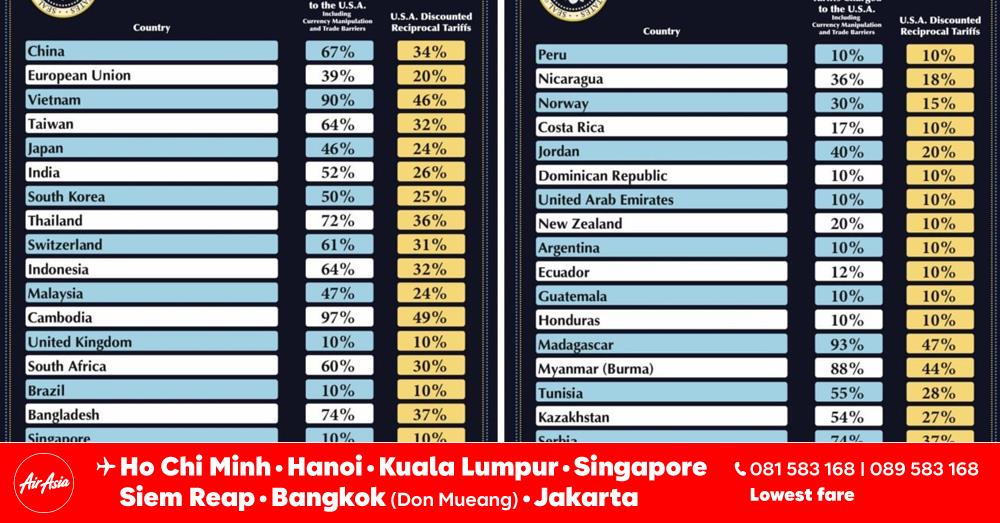WASHINGTON, Apr 3 (Newsweek) - President Donald Trump on Wednesday imposed sweeping new tariffs on all imported goods and unveiled a detailed list of reciprocal duties targeting more than 60 countries, asserting that the move is necessary to combat trade imbalances and restore U.S. manufacturing.
"This is Liberation Day," Trump said during a Rose Garden ceremony, holding up a printed chart of countries and their new tariff rates. "For decades, our country has been looted, pillaged, raped and plundered by nations near and far, both friend and foe alike."
The tariffs, which he described as "reciprocal," fulfill a key campaign pledge and are aimed at pressuring trade partners to lower their own barriers. The administration expects the new rates to remain in place until the U.S. narrows a $1.2 trillion trade imbalance recorded last year.
But the extensive list of tariffs also threatens to upend the U.S. economy, as many — but not all — economists say they amount to taxes on American companies that will be passed down to consumers.
The president said there will be a "baseline" tariff of 10 percent on all imports.
Some nations will face "discounted reciprocal tariffs" which are at half the rate those countries currently charge the U.S.
According to a chart Trump held up, the U.S. will impose a 34 percent tariff on Chinese imports; 20 percent on goods from the European Union; 25 percent on South Korean products; 24 percent on Japanese imports; and 32 percent on goods from Taiwan.
The 34 percent reciprocal tariff that China will face is in addition to a 20 percent tariff on the country which is already in effect, the White House said.
The move also includes specific tariffs on countries with low formal tariff rates but significant trade surpluses with the U.S., including the UK, Australia and Brazil.
The U.S. had an overall trade deficit of $918.4 billion in 2024, with the largest gaps coming from China ($295.4 billion), the European Union ($235.6 billion), Mexico ($171.8 billion) and Vietnam ($123.5 billion), according to the U.S. Bureau of Economic Analysis.
While announcing the measures, Trump invoked national security powers under a continuing state of emergency to justify the action, circumventing Congressional approval.
While specifics about enforcement and duration of the new tariffs remain unclear, a document distributed to reporters included a list of 65 countries with calculated reciprocal rates.
Cambodia topped the chart at a 49% tariff, followed by Madagascar (47%), Sri Lanka (44%), and Vietnam (46%).
Major U.S. partners like Japan, South Korea and India were also included, despite active trade negotiations in recent years.

Photo from Newsweek